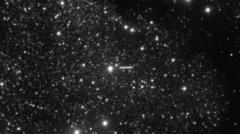The Atacama desert in Chile sits long and lean, sandwiched between the Andes Mountains and the Pacific Ocean.
The desert's extreme aridity makes it one of the clearest places on Earth to view the night sky and is famous for being home to the largest radio telescope in the world.
But the usually barren landscape has been transformed by a carpet of colourful wildflowers, brought to life by significant rainfall during the southern hemisphere's winter months.
This phenomenon occurs every few years, when above-average rainfall soaks the desert floor, causing dormant seeds to spring to life.
The Atacama desert typically receives less than 15mm of rain every year. But the area had more than 12mm during August alone – most of which fell on just one day.
This magnificent bloom is made up of more than 200 different species of wildflowers, some of which do not grow anywhere else in the world. It typically occurs from the end of August to November, with this year's display expected to peak in the coming weeks, according to Chile's National Forest Corporation (CONAF).

















